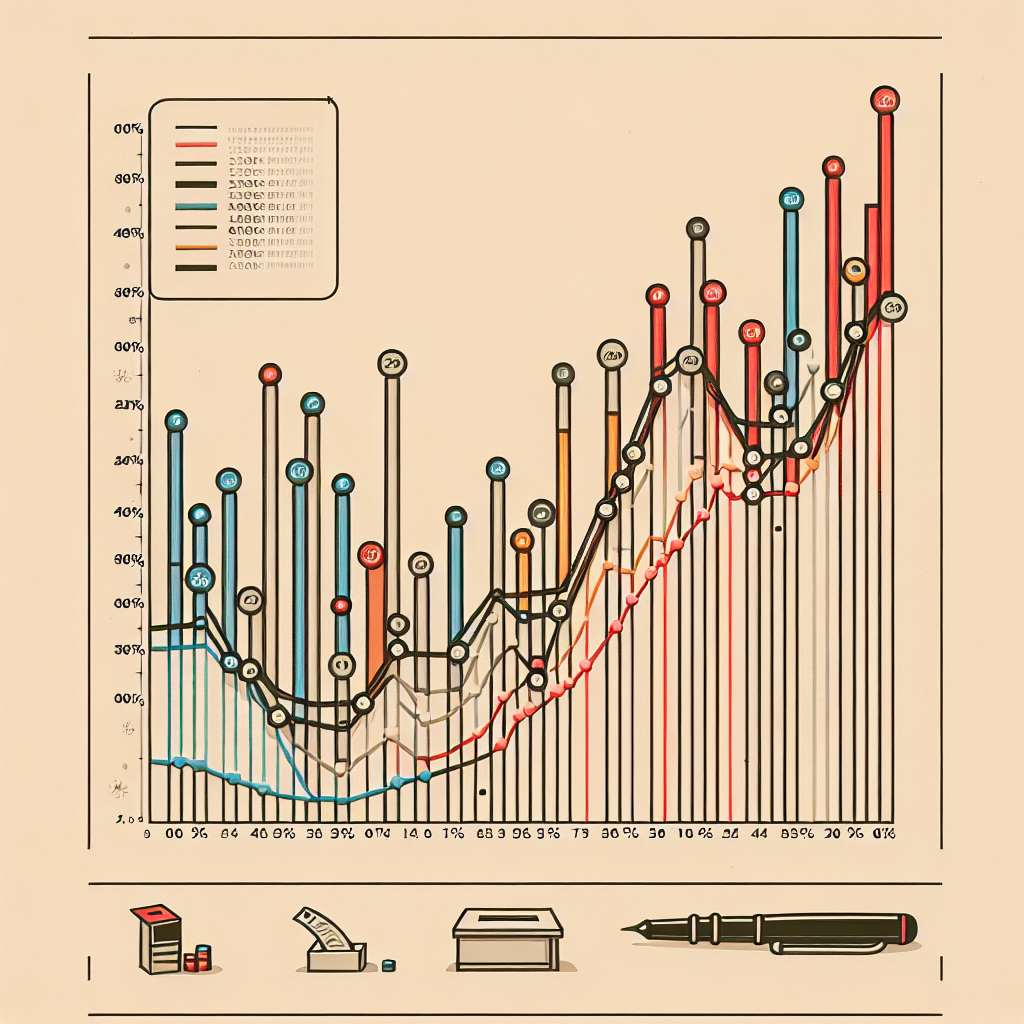Introduction
As the critical Election Day approaches in 2025, understanding voter turnout trends is essential for analyzing the democratic health of a nation. Voter turnout refers to the percentage of eligible voters who cast a ballot in an election, and this metric varies significantly across demographics, regions, and election years. By examining the data on voter turnout trends, we can gauge potential voter engagement and predict electoral outcomes. This article will delve into the latest statistics and analyses regarding voter turnout trends, providing insights on what the data reveals ahead of Election Day.
Voter Turnout Trends in Recent Elections
In recent years, voter turnout trends have shown a remarkable increase, particularly in the wake of the 2020 presidential election. According to the U.S. Census Bureau, turnout among eligible voters surged to nearly 66.7%, the highest rate in over a century. This unprecedented engagement was fueled by heightened political awareness, social media campaigns, and the significant impact of movements advocating for issues such as racial equality, climate change, and healthcare reform. These trends signal that voters are increasingly motivated to participate in the electoral process, especially among younger generations who are more inclined to take an active role in shaping their political landscape.
The preliminary data for the 2025 election suggests that this trend may continue, with early voting numbers indicating a robust turnout in the lead-up to November. Studies have shown that states that implement comprehensive early voting procedures tend to report higher overall participation. For instance, states like California and Colorado, which expanded access to early voting and mail-in ballots, have seen substantial increases in voter turnout. The ongoing discussion surrounding voter access highlights the importance of systemic changes in promoting higher participation rates across diverse populations.
Demographic Shifts and Their Impact on Voter Turnout
Demographic factors play a crucial role in shaping voter turnout trends. Recent analyses reveal that younger voters, particularly those aged 18 to 29, displayed an increased involvement in the 2020 election, reaching turnout rates of 50% compared to only 36% in 2016. This demographic shift suggests a growing political awareness and activism among younger constituents, driven partly by social media influences and peer engagement. As we approach the 2025 elections, it is essential to consider whether this trend will sustain and translate into even higher turnout rates among this crucial voting bloc.
Moreover, diversity and representation in the electorate are paramount in understanding voter turnout. Research indicates that minority groups, including Hispanics and African Americans, have also shown improved participation rates in elections over the past few years. The 2020 presidential election saw Hispanic voter turnout increase by 5% from 2016, highlighting the importance of addressing issues that resonate with these communities. As elections approach in 2025, candidates who engage with and prioritize the concerns of diverse groups are more likely to drive higher turnout, ultimately reshaping political dynamics.
Barriers to Voter Turnout and Effective Solutions
Despite the upward trends in voter turnout, significant barriers still hinder many eligible voters from participating in elections. These challenges range from voter ID laws, limited access to polling places, and socioeconomic factors such as income disparities and education levels. Research from various organizations indicates that underprivileged communities often encounter logistical obstacles, which can discourage voter participation. To address these systemic challenges, initiatives aimed at increasing accessibility are crucial. This includes expanding the availability of early voting, mail-in ballots, and online voter registration.
In response to these barriers, various grassroots organizations and advocacy groups have developed effective solutions designed to promote awareness and facilitate voter registration. Campaigns focused on educating voters about their rights and the electoral process have proven successful in increasing engagement. For example, initiatives targeting first-time voters and marginalized communities offer resources and support to ensure that all voices are heard on Election Day. These efforts underscore the importance of continuous outreach and education in paving the way for higher voter turnout.
Influence of Technology and Social Media on Voter Turnout
In recent years, technology and social media platforms have emerged as pivotal tools in driving voter turnout. These platforms provide an unprecedented means for political campaigns to engage with constituents directly, disseminate information quickly, and mobilize voters. During the lead-up to the 2020 election, social media campaigns were credited with significantly increasing voter awareness and participation, particularly among younger demographics. With platforms like Twitter and Instagram delivering targeted messaging, campaigns could effectively reach audiences that traditional media channels may overlook.
Looking ahead to the 2025 elections, the role of technology continues to evolve. Virtual town halls, influencer endorsements, and digital voter mobilization efforts will likely play an integral role in shaping voter turnout. Interactive platforms that allow voters to engage with candidates and learn about issues relevant to their communities are anticipated to further contribute to a more informed electorate. Ensuring that all internet users possess the digital literacy needed to navigate this landscape is crucial, as disparities in access may also inhibit turnout.
Forecasting Voter Turnout for the 2025 Elections
As Election Day in 2025 approaches, several factors will undoubtedly influence voter turnout predictions. Historical patterns suggest that midterm elections tend to experience lower turnout compared to presidential elections, but unique circumstances may shift these dynamics. The political climate, recent policy changes, and major world events can all serve as catalysts for increased voter engagement. For example, the ongoing discussions surrounding environmental policy and racial justice may energize voters, leading to higher turnout rates among those who feel their voices matter in shaping important issues.
Polling data from early 2025 indicates that voters are more engaged than ever, with higher participation rates expected in states that have prioritized access to early voting and mail-in ballots. Increased awareness around the stakes of the upcoming election, heightened by current events, indicates that voter turnout may surpass previous midterm norms. Conversely, the continued prevalence of misinformation may pose challenges to these positive trends, as voters seek clarity amidst uncertainty.
Conclusion
Voter turnout trends are a powerful reflection of the state of democracy in any nation, particularly as we approach the pivotal 2025 elections. Analyzing recent data reveals a landscape marked by increasing engagement across diverse demographics, a push for accessibility, and the influential role of technology. However, barriers still exist that can deter voter participation, necessitating ongoing efforts to educate and mobilize voters effectively. Ultimately, understanding these trends is essential for ensuring a more representative electoral process and fostering a vibrant democratic society.
FAQs
What factors contribute to high voter turnout?
Several factors contribute to high voter turnout, including increased political awareness, accessibility (such as early voting and mail-in ballots), and demographic engagement. Public interest in pressing issues can also energize voters, leading to greater participation.
How does technology influence voter turnout?
Technology, especially social media, significantly influences voter turnout by providing platforms for candidates to engage with constituents, disseminate information, and mobilize voters. Innovations like online registration and virtual town halls help increase participation.
What are the barriers to voter turnout?
Common barriers to voter turnout include restrictive voter ID laws, lack of access to polling places, socioeconomic disparities, and misinformation. Efforts to address these challenges are essential for promoting higher participation rates.












